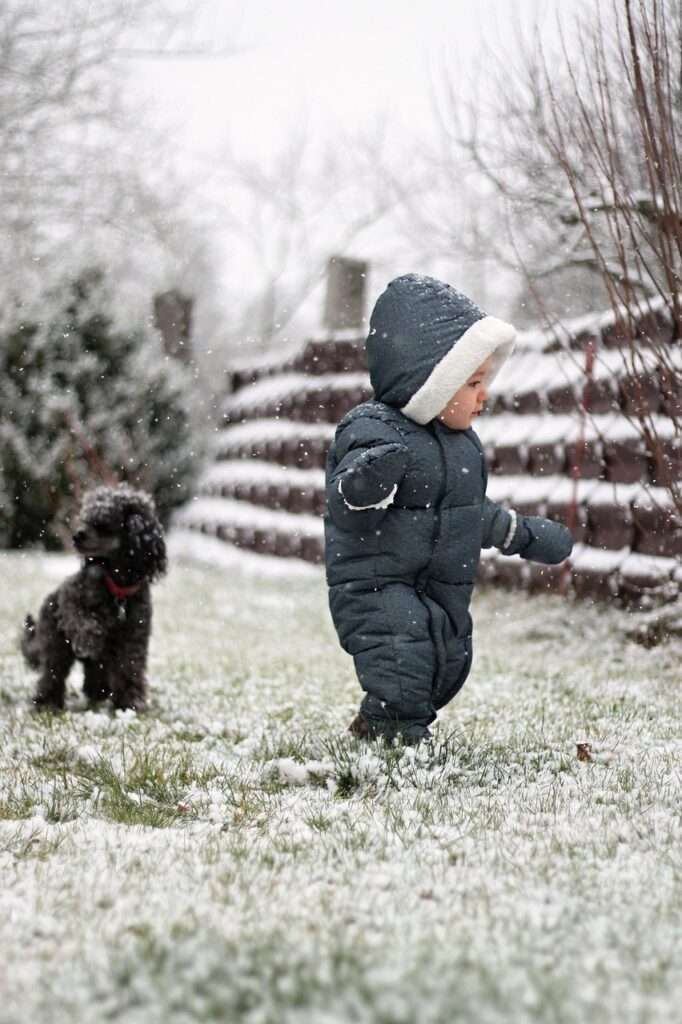With the arrival of cold days, most people automatically pull out coats, jackets and other winter clothing. But what about our four-legged pets? Do they also need a coat or a raincoat for walks in cold weather, or is their fur enough protection? In this article, we'll give you advice on how to dress your dog properly, what materials to choose and when outfits are appropriate.
To dress or not to dress?
The dog's coat provides natural protection against cold and heat, which thanks to its thermoregulatory abilities allows most dogs to cope with inclement weather without problems. However, this does not apply to all breeds and age groups. As with humans, young, old and sick dogs are more sensitive to cold. For dogs with sparse coats and hairless breeds, wetsuits are an essential part of their care. "The decision whether or not to dress your canine pet will always remain yours. However, it is not necessary to dress a young and healthy dog or a dog that is really a proper 'furry' dog." explains Denis Klinger, director of PetExpert, which specialises in pet insurance.
Types of outfits
There are several types of dog suits that perform different functions depending on the weather and the needs of the animal. Sweaters, jackets and sweatshirts for dogs are primarily used to keep them warm and protect them from cold. You will find a variety of sizes, materials and cuts on the market. Some models also have a waterproof layer and reflective elements that increase the dog's safety when walking in the dark. Raincoats provide protection against moisture, and are often a combination of thermal comfort and protection from humidity. Such a suit is especially useful for walking in rain or drizzle. Drying dog robes, on the other hand, are designed to help the coat dry faster after bathing or swimming, ensuring comfort and preventing your pet from catching a cold.
Booties for dogs as a valuable helper
Dog booties are a useful tool for protecting paws in challenging conditions. The winter season is especially challenging for urban dogs, as the salt and chemicals used on the sidewalks can irritate and damage the pads of their paws. The booties protect the dog's paws not only from salt, but also from frost, sharp objects such as shards or pebbles, and from extremely hot surfaces in the summer. When choosing booties, it is important to choose the right size and hardness so that they fit well and do not restrict the dog's movement. Good quality booties should be waterproof, non-slip and easy to fasten.

Functionality is key!
"We should dress the dog in functional clothes, not sweaters, sweatshirts or costumes for show. Functional clothing does exactly what is important for a dog on cold days," Klinger explains.
What features should such a functional suit have?
- Easy fastening - Functional clothing for dogs should have a practical fastening so that the dog does not have to be poked through the head or paw holes. The ideal is a piece that you simply place on the dog and fasten under the belly.
- Waterproofing - You should not dress your dog in sweaters or sweatshirts that will not protect him from moisture. Properly chosen clothing will ensure that your dog stays dry and maintains the right body temperature whether it is raining, snowing or freezing. Waterproof material also reduces the risk of colds and other health problems that can arise after walking in the wet.
- Protection of key body parts - The suit should mainly protect the area from the neck to the root of the tail, including the joints, spine and loins, which are most exposed to the cold.
- Comfort during movement - A functional outfit must fit well and must not slip or pull away when the dog moves. This ensures that the dog can move freely and comfortably even during more active activities.
(for)/ gnews - RoZ
ILLUSTRATIVE PHOTO - pixabay



